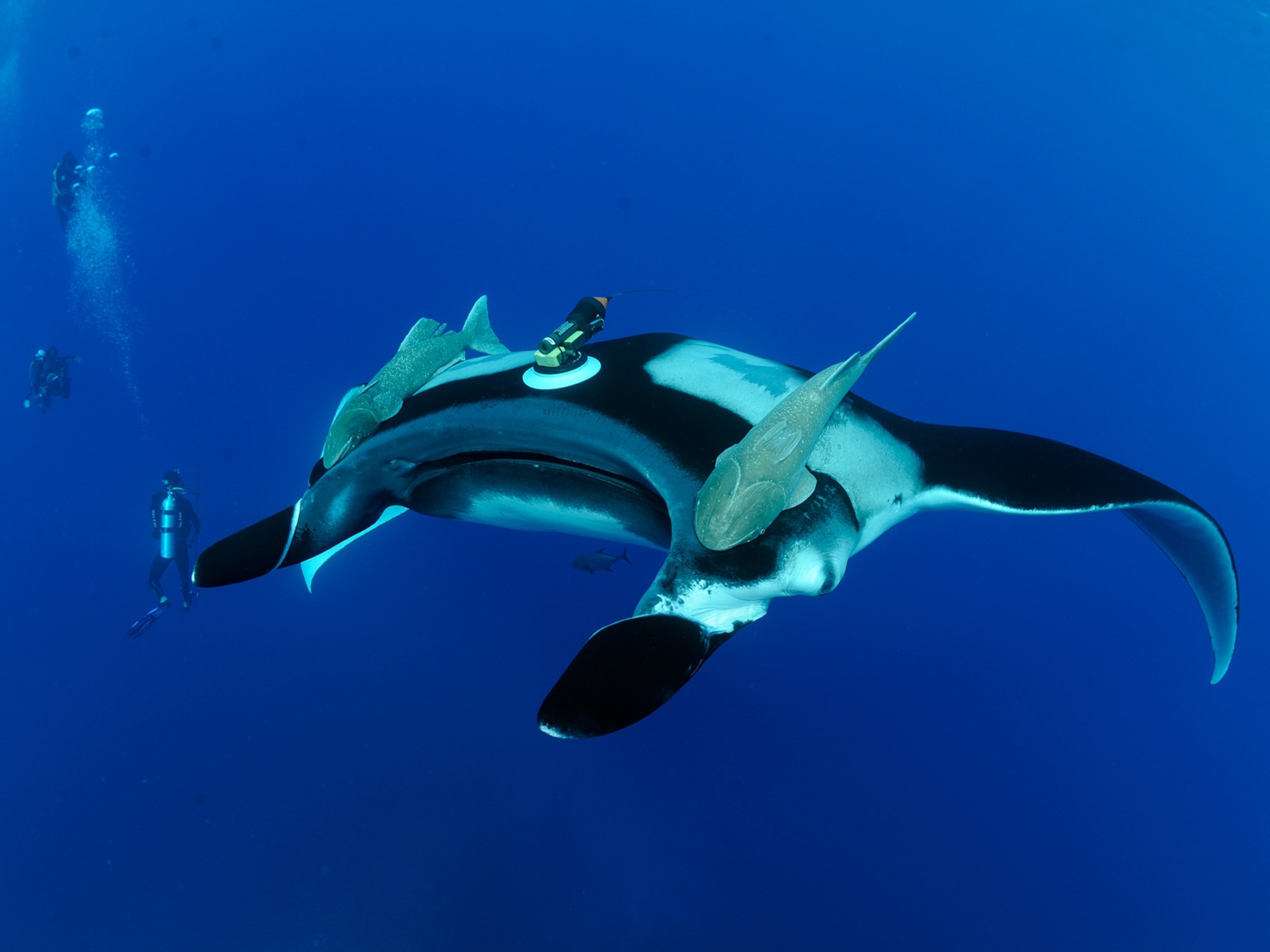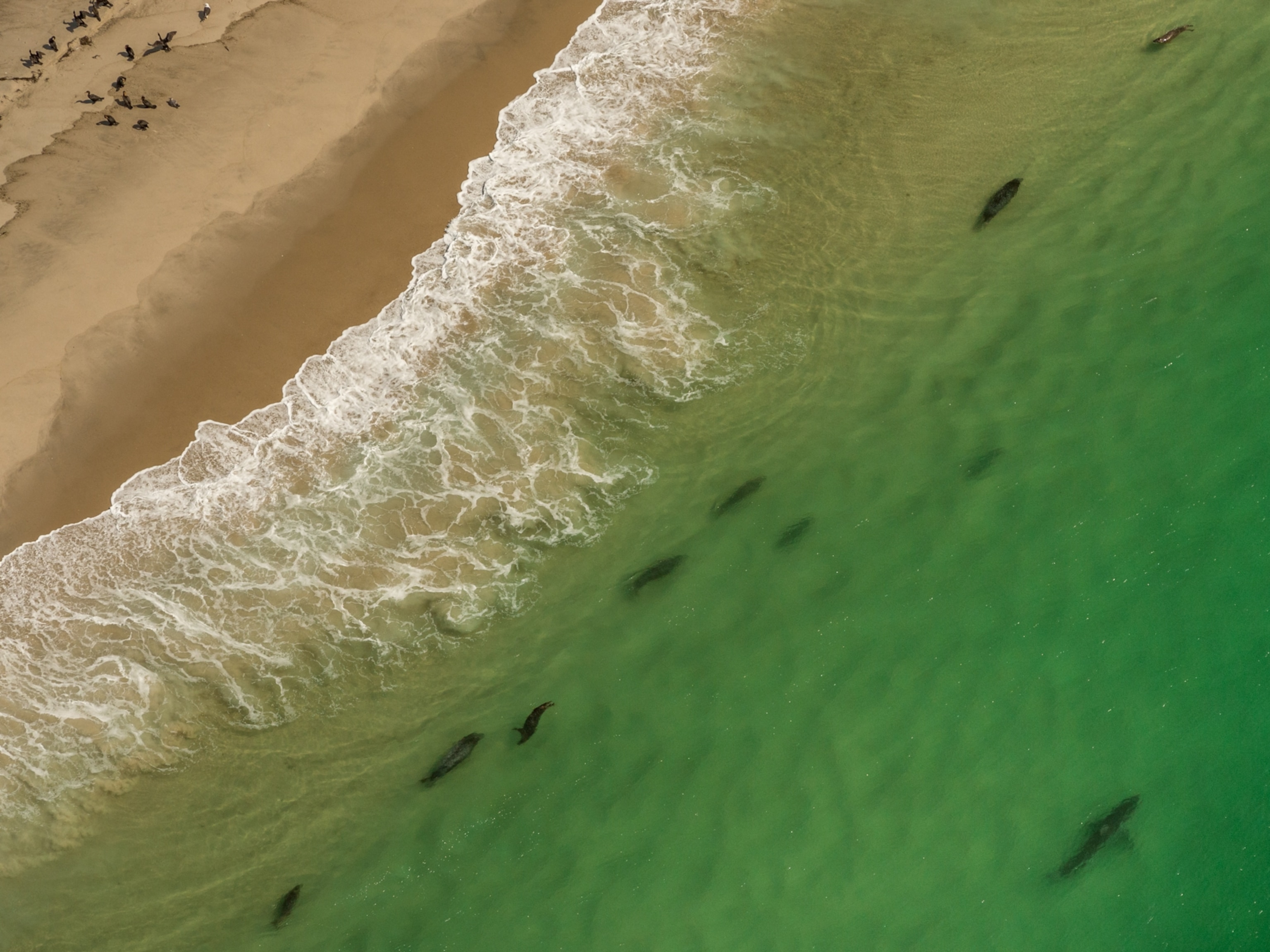It's a Fish-Eat-Fish World
Some 300,000 marine species are known to science—about 15 percent of all the species identified on the planet. But the sea is so vast that a million or more as yet unknown species may live in its waters. Most of these aquatic species are tied together through the food web.
Level One: Photoautotrophs
The foundation of the sea's food chain is largely invisible. Countless billions of one-celled organisms, called phytoplankton, saturate sunlit upper-ocean waters worldwide. These tiny plants and bacteria capture the sun's energy and, through photosynthesis, convert nutrients and carbon dioxide into organic compounds. On the coast, seaweed and seagrasses do the same thing.
Together, these humble plants play a large role: They are the primary producers of the organic carbon that all animals in the ocean food web need to survive. They also produce more than half of the oxygen that we breathe on Earth.
Level Two: Herbivores
The next level of the marine food chain is made up of animals that feast on the sea's abundant plant life. On the ocean's surface waters, microscopic animals—zooplankton, which include jellyfish and the larval stages of some fish, barnacles, and mollusks—drift across the sea, grazing opportunistically. Larger herbivores include surgeonfish, parrotfish, green turtles, and manatees.
Despite their differences in size, herbivores share a voracious appetite for ocean vegetation. Many of them also share the same fate—which is to become food for the carnivorous animals of the food chain's top two levels.
Level Three: Carnivores
The zooplankton of level two sustain a large and diverse group of small carnivores, such as sardines, herring, and menhaden. This level of the food chain also includes larger animals, such as octopuses (which feed on crabs and lobsters) and many fish (which feed on small invertebrates that live near shore). Though these animals are very successful hunters, they often fall prey to a simple fact of ocean life: big fish eat smaller fish.
Level Four: Top Predators
The large predators that sit atop the marine food chain are a diverse group that includes finned (sharks, tuna, dolphins), feathered (pelicans, penguins), and flippered (seals, walruses) animals. These apex predators tend to be large, fast, and very good at catching prey. They are also long-lived and usually reproduce slowly.
But the marine food chain's top predators are common prey for the most deadly hunters of all—humans. When top predator species are depleted, their numbers are often slow to rebound, and their loss can send shock waves through the entire food web.
Alternative Food Chains
The primary marine food web, which is based on plant productivity, includes many of the sea's species—but not all of them. There are other deep-ocean ecosystems that are entirely independent of the sunlight energy that kick-starts the main marine ecosystem. At their roots, these unique ecosystems are fuelled by chemical energy, which enters the ocean from sources like seafloor hydrothermal vents.
You May Also Like
Go Further
Animals
- Orangutan seen using plants to heal wound for first timeOrangutan seen using plants to heal wound for first time
- What La Palma's 'lava tubes' tell us about life on other planetsWhat La Palma's 'lava tubes' tell us about life on other planets
- This fungus turns cicadas into zombies who procreate—then dieThis fungus turns cicadas into zombies who procreate—then die
- How can we protect grizzlies from their biggest threat—trains?How can we protect grizzlies from their biggest threat—trains?
Environment
- What La Palma's 'lava tubes' tell us about life on other planetsWhat La Palma's 'lava tubes' tell us about life on other planets
- How fungi form ‘fairy rings’ and inspire superstitionsHow fungi form ‘fairy rings’ and inspire superstitions
- Your favorite foods may not taste the same in the future. Here's why.Your favorite foods may not taste the same in the future. Here's why.
- Are the Great Lakes the key to solving America’s emissions conundrum?Are the Great Lakes the key to solving America’s emissions conundrum?
- The world’s historic sites face climate change. Can Petra lead the way?The world’s historic sites face climate change. Can Petra lead the way?
History & Culture
- Meet the ruthless king who unified the Kingdom of Hawai'iMeet the ruthless king who unified the Kingdom of Hawai'i
- Hawaii's Lei Day is about so much more than flowersHawaii's Lei Day is about so much more than flowers
- When treasure hunters find artifacts, who gets to keep them?When treasure hunters find artifacts, who gets to keep them?
Science
- Why ovaries are so crucial to women’s health and longevityWhy ovaries are so crucial to women’s health and longevity
- Orangutan seen using plants to heal wound for first timeOrangutan seen using plants to heal wound for first time
Travel
- A slow journey around the islands of southern VietnamA slow journey around the islands of southern Vietnam
- Is it possible to climb Mount Everest responsibly?Is it possible to climb Mount Everest responsibly?
- 5 of Uganda’s most magnificent national parks
- Paid Content
5 of Uganda’s most magnificent national parks





